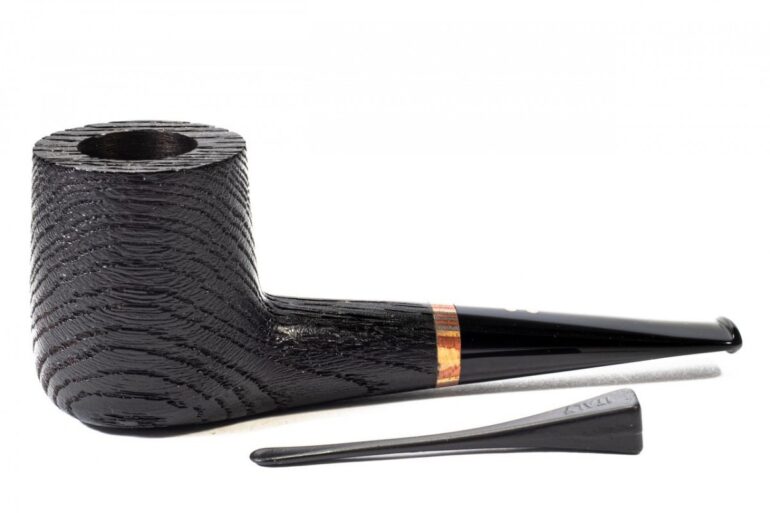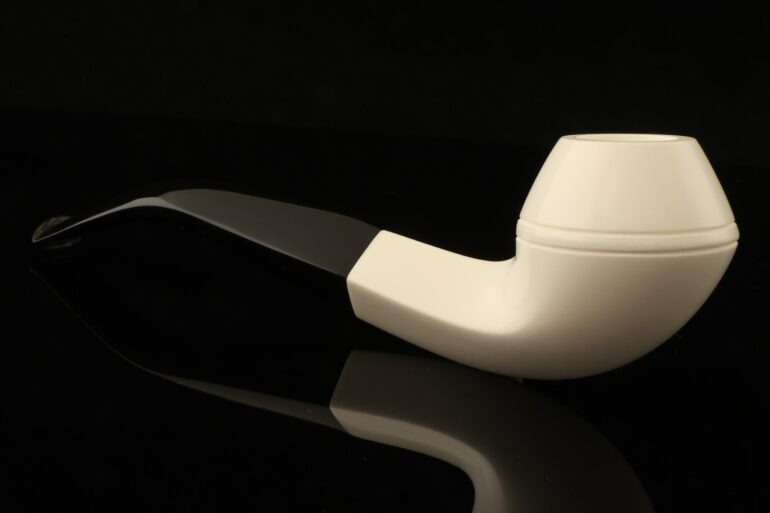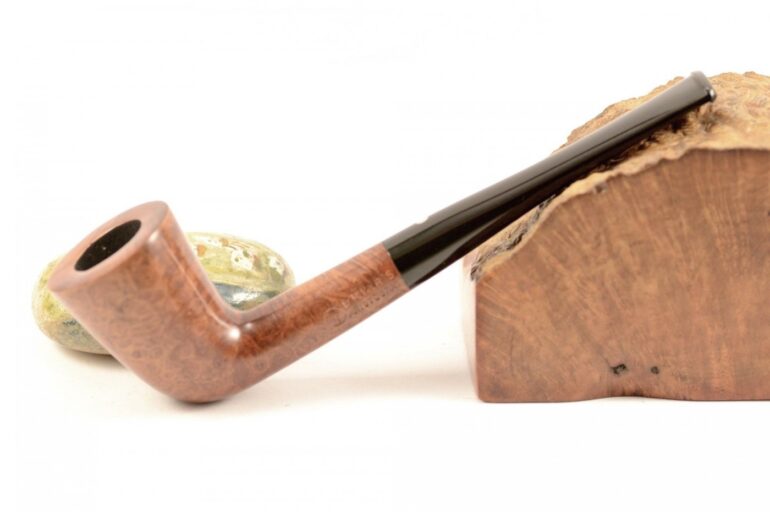Pipe geometry determines performance. The way a pipe draws, balances, and delivers flavor depends entirely on its shape. No smoker achieves consistent results without first selecting the right structure.
Classic pipe shapes are not based on style. They exist because each one supports a specific physical function. Billiard maintains alignment between bowl and stem for steady airflow. Bulldog uses a wide base and angular shank to control heat and support grip. Dublin applies a tapered bowl to manage combustion and flavor separation.
Material plays a role, but shape decides outcome. No pipe user can rely on guesswork when form dictates performance. Also, the experience is not the same with each one. Some models, such as Biliard, represent a good tobacco pipe for beginners, where are also more complex options where setting or cleaning can be more complex.
Many still choose classic pipe shapes because no modern variation replaces their mechanical logic. Every detail in the following sections breaks down how each shape works and why those differences matter.
The Billiard: Straight Shape, Balanced Use

Billiard pipes follow strict proportions. The bowl stands vertical. The stem aligns in a straight line with the shank. Most Billiard shapes use a one-to-one ratio between bowl height and stem length. This creates a centered feel in the hand.
Why Billiard Remains Standard
Smokers rely on Billiard pipes for consistency. Straight airflow reduces turbulence. Draw remains clean across different cuts of tobacco. Cleaning the airway takes less time due to the direct passage from chamber to mouthpiece.
When to Use a Billiard
Choose a Billiard when you need a pipe that works across all types of tobacco. It suits both short and long smokes. The bowl size usually offers medium depth, ideal for most blends. The pipe rests flat on a surface, making it useful in routine settings.
What to Expect in Performance
Expect even burn with fewer relights. The draw stays steady because the alignment supports unrestricted airflow. The weight feels balanced, especially for those who prefer holding the pipe rather than clenching it.
The Bulldog: Wide Base, Strong Grip

The Bulldog stands apart through its bowl and shank design. The bowl widens at the bottom and tapers toward the rim. Most versions feature two bead lines near the top. The shank forms a diamond shape, often paired with a short stem.
Why Bulldog Suits Grip and Heat
The wide bowl base helps distribute heat across a larger surface. This reduces hot spots during longer sessions. The diamond shank improves grip, especially for smokers who hold the pipe in hand rather than between teeth.
When to Use a Bulldog
Use a Bulldog when comfort and control matter. It performs best during extended sessions. The stout design also fits well in smaller travel cases. Many smokers choose this shape for outdoors or longer reading sessions due to its stability.
What to Expect in Performance
Expect slower burn in the lower part of the chamber. The bowl shape holds moisture below the taper line, which can help with drier tobacco. The draw stays steady but may need careful packing near the rim due to the inward slope.
The Dublin: Slanted Bowl, Focused Flavor

Dublin pipes feature a conical bowl that widens at the rim. The bowl often leans forward, creating a forward-slanted profile. Shank and stem length vary more in this shape compared to Billiard or Bulldog.
Why Dublin Works for Flavor
The wide rim allows more air to reach the top of the tobacco. This increases initial combustion and supports brighter notes. The narrowing toward the base helps concentrate flavor as it draws upward.
When to Use a Dublin
Use a Dublin when you want to focus on taste. It works well for flake or ribbon tobacco. The shape supports slow draws and layered flavor delivery. Forward lean also shifts weight slightly ahead, which can improve clenching for some users.
What to Expect in Performance
Expect faster ignition at the rim with tighter flavor toward the finish. The shape supports full chamber burns with fewer leftovers. Packing may require practice due to the changing chamber width, but once learned, results stay reliable.
Comparing Structure and Performance
| Feature | Billiard | Bulldog | Dublin |
| Bowl Shape | Vertical, cylindrical | Tapered with wide base | Conical, widening toward rim |
| Shank Design | Straight, round | Short, diamond-shaped | Variable (often round or oval) |
| Stem Alignment | Straight, linear | Often bent or saddle | Can be straight or slightly bent |
| Airflow Behavior | Direct, smooth | Slight restriction at junction | Focused draw due to taper |
| Grip and Handling | Neutral balance | Strong grip due to bowl width | Forward tilt changes hand feel |
| Ideal Tobacco Type | Broad range | Medium-cut blends, slow burn | Flakes or blends with flavor edge |
| Burn Speed | Medium | Slow, cooler base | Fast at rim, concentrated draw |
| Best Use Case | Daily smoking, reliable outcome | Long sessions, stable handling | Flavor-focused, careful smoking |
Each classic shape produces measurable differences in burn rate, airflow, and tobacco performance. Those differences come from physical design. Form controls airflow path, heat transfer, and hand contact.
The Billiard’s straight path creates a predictable burn. It gives even resistance with minimal variation across different tobaccos. Its symmetry supports balance in hand and reliable combustion through the entire bowl.
The Bulldog performs differently. Its wider base spreads heat, allowing tobacco to smolder without overheating the rim. The diamond shank adds finger stability, which benefits longer smokes or outdoor use.
The Dublin controls flavor concentration. As smoke travels up the taper, it narrows, focusing taste through the stem. The forward-leaning bowl shifts weight slightly ahead, affecting how it rests in the mouth or hand.
Each shape creates a different smoking rhythm. Choosing based on appearance alone leads to mismatch. Selecting based on structure produces better results. Function must guide the choice. Form dictates performance.
How to Make the Right Choice

Pipe selection must follow use. A pipe cannot succeed unless its shape fits your habits, your tobacco, and your session length. The wrong geometry ruins the draw, overheats the bowl, or turns the session into work.
Short daily smokes benefit from the Billiard. It lights fast, clears easily, and handles mixed blends without issue. The balance stays neutral, and the structure supports a clean finish without buildup.
Longer sessions demand the Bulldog. Its wide chamber base cools the lower tobacco. The angular shank keeps the grip firm, even across extended use. Stability defines the experience, not ornament.
Flavor-focused users should reach for the Dublin. Its widening bowl supports top-to-bottom flavor separation. Slow draws improve performance. Careful packing produces clear payoff in taste and temperature.
Every shape has a role. Form always controls function. You choose based on how it performs, not how it looks. That is the only correct method.
Last Words
Shape controls everything. A smoker who ignores form deals with uneven burn, sour draw, or heat spikes. That outcome does not come from packing. It comes from structure.
Billiard gives clean, direct airflow with no curve or angle to disrupt the draw. Bulldog fixes hand position and holds heat away from the rim. Dublin narrows the chamber base and pulls flavor up with more focus per draw.
Pick based on what your sessions require. Long, still sessions call for stability. Short use calls for clean-out and balance. Flavor demands a narrowing chamber with controlled air.
Choose based on how it works—not how it looks on a shelf.
